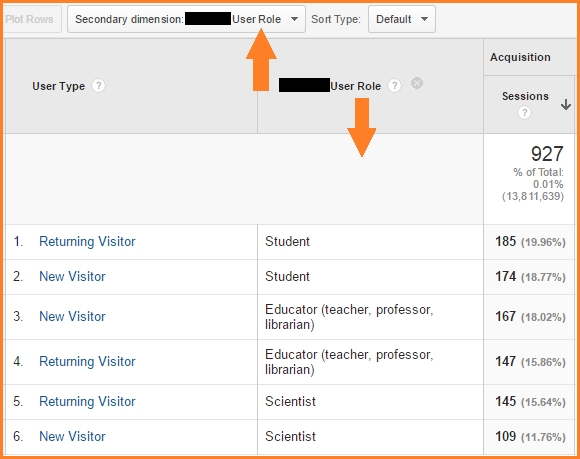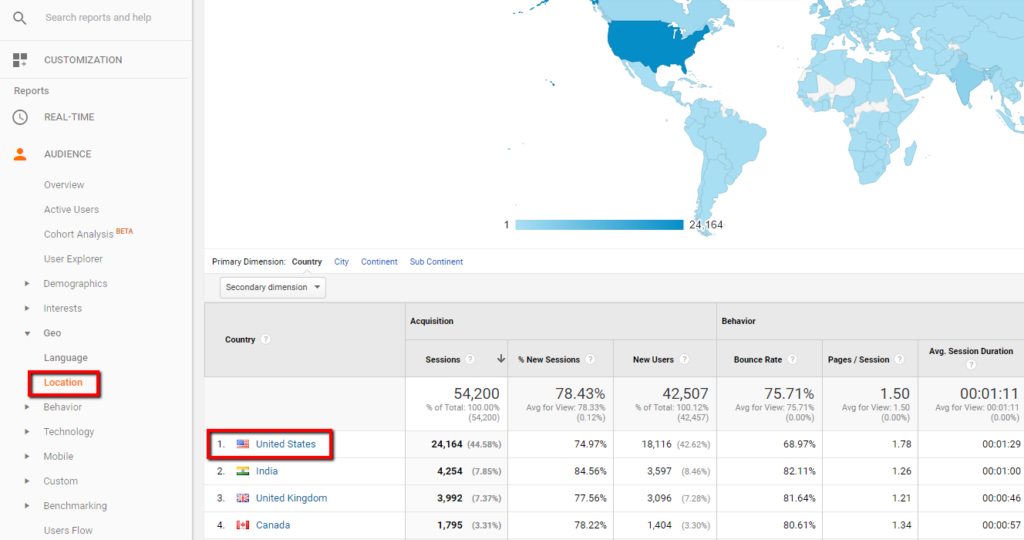The Value of 'Secondary Dimensions' in Google Analytics: Thorough Analysis
The Value of 'Secondary Dimensions' in Google Analytics: Thorough Analysis
Blog Article
Demystifying Second Measurement in Google Analytics: The Key to Recognizing Your Information Like Never Ever Prior To
In the world of electronic analytics, the capability to extract meaningful understandings from data is extremely important for informed decision-making. Among the myriad of tools offered, Google Analytics stands out as a giant, yet lots of users remain unaware of the untapped possible lying within its Secondary Measurement function. By peeling off back the layers of complexity surrounding this tool, an entire new world of information interpretation and evaluation introduces itself. Recognizing the nuances of Secondary Dimension could be the missing piece in your analytics puzzle, clarifying trends and connections that were formerly obscured.
Understanding the Basics of Secondary Measurement
Second dimensions in Google Analytics work as supplementary features that supply deeper insights into main information metrics, enhancing the overall understanding of customer actions and communications on a site. By including secondary measurements to your primary information metrics, you can sector and evaluate your data better, discovering useful details that may have been hidden or else.
Understanding the essentials of secondary measurements is crucial for maximizing your site's efficiency and user experience. what is a “secondary dimension” in google analytics?. When utilizing second measurements, it is important to recognize that they can be added to numerous records in Google Analytics, permitting you to explore additional elements of your information past the common measurements
In addition, secondary dimensions enable you to contrast and contrast various information factors, aiding you identify patterns, fads, and connections that can notify your advertising and marketing techniques and internet site optimizations. Whether assessing website traffic sources, customer demographics, or behavior on particular web pages, secondary measurements play a critical role in removing purposeful understandings from your Google Analytics information.
Using Second Measurement in Records
To strengthen the analysis of individual actions and communications on a web site, integrating secondary measurements right into records in Google Analytics gives a more thorough understanding of data metrics. By applying additional measurements in records, analysts can uncover valuable insights that surpass the surface-level data given by key measurements alone. This attribute enables individuals to segment and drill down into their data further, exposing correlations and patterns that might have otherwise gone undetected.
Through the application of additional measurements, individuals can obtain a much deeper understanding of the context bordering their main information points. As an example, combining the key dimension of 'source/medium' with a secondary measurement like 'touchdown page' can reveal which details landing web pages are driving traffic from various resources. This level of granularity can help marketers tailor their methods to maximize performance based upon these detailed understandings.
Analyzing Data With Secondary Dimension
Making use of second dimensions in information evaluation boosts the deepness of understandings stemmed from Google Analytics records. By including a secondary dimension to your main information sets, you can reveal valuable relationships and patterns that may otherwise continue to be undetected. This additional layer of details permits even more nuanced analyses of customer actions, web traffic resources, and various other key metrics.
When analyzing information with additional dimensions, it is vital to focus on pertinent combinations that line up with your details goals. For example, pairing the primary measurement of 'touchdown web pages' with a second dimension like 'tool category' can expose exactly how various tools influence the performance of different touchdown web pages. This type of evaluation can result in workable insights, such as maximizing page formats for details gadgets to enhance total user experience and conversion rates.
Additionally, leveraging secondary dimensions allows you to segment and contrast information extra effectively, offering a comprehensive sight of your web site's efficiency from various angles. This diverse approach to data evaluation equips organizations to make enlightened choices and customize their approaches for maximum impact.

Advanced Techniques With Secondary Measurement
Exploring complex data partnerships with second dimensions unlocks innovative analytical capabilities in Google Analytics. By incorporating secondary dimensions strategically, experts can dig much deeper right into their data and remove valuable insights. One advanced method involves making use of second measurements to section data further, making it possible for a much more granular evaluation of individual behavior. For instance, pairing the key dimension of 'Source/Medium' with the second measurement Extra resources of 'Gadget Group' can expose how various devices contribute to website traffic from different sources.
Moreover, using second dimensions together with filters permits for even more exact data manipulation. Filtering data by certain criteria and after that including secondary dimensions can offer a more clear photo of user interactions based upon different qualities. This technique is specifically helpful for identifying patterns or anomalies within segmented information sets.
In addition, utilizing secondary dimensions in personalized records or control panels can improve the analysis process and assist in the tracking of essential performance indicators throughout different measurements. By tailoring reports with additional dimensions, analysts can focus on certain metrics tailored to their distinct logical demands, boosting the total information analysis and decision-making process.
Enhancing Data Interpretation With Second Dimension
Enhancing information analysis with second dimensions in Google Analytics offers a deeper understanding of customer actions and insights into crucial efficiency metrics. what is a “secondary dimension” in google analytics?. By using additional dimensions, analysts can section and filter their information to discover useful patterns check it out and trends that could not be immediately apparent when looking at the data in its primary form. This improved degree of granularity enables for a more thorough evaluation of user interactions on a site or application
Secondary measurements can be particularly beneficial in separating specific variables that might affect individual behavior, such as the resource of traffic, gadget type, or geographical location. By layering these additional measurements onto primary information sets, experts can gain a more nuanced viewpoint on exactly how various elements influence individual involvement and conversion prices.
Verdict
Finally, making use of the secondary dimension function in Google Analytics gives a much deeper level of insight right into website data by allowing users to analyze information from multiple perspectives. By using additional measurements in records, assessing data, and employing advanced strategies, individuals can enhance their data analysis and make more enlightened decisions for their websites - what is a “secondary dimension” in google analytics?. Recognizing and leveraging secondary measurements is important for acquiring an extensive understanding of site performance and user behavior

In conclusion, making use of the additional dimension function in Google Analytics offers a deeper level of insight into site data by enabling users to assess information from multiple perspectives.
Report this page